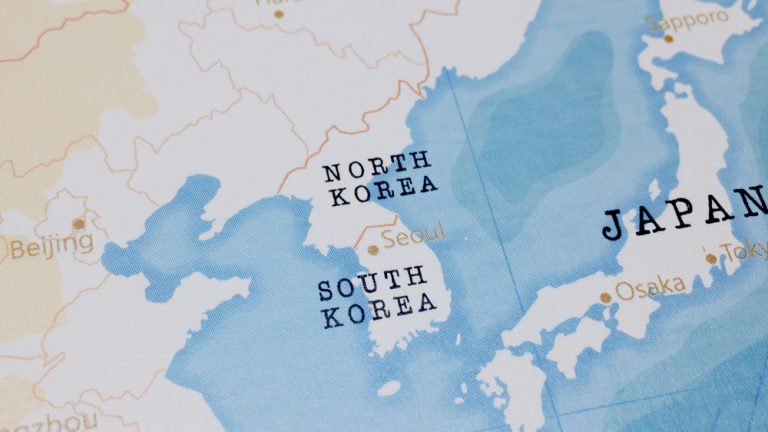North Korea announced a dramatic escalation in its border policies on Wednesday, permanently sealing its boundary with South Korea and constructing defense structures to counter what it described as “confrontational hysteria” from South Korean and U.S. forces. The announcement came without the anticipated constitutional changes that would formally designate South Korea as North Korea’s principal enemy. With cross-border exchanges already halted for years, the impact of these new measures remains uncertain, but they highlight a growing intensity in the region’s security dynamics.
Border Blockade and Military Build-Up
North Korea’s military declared its intention to “completely cut off roads and railways” linked to South Korea while fortifying its side with “strong defense structures.” According to the Korean Central News Agency (KCNA), these measures are part of a “self-defensive” approach aimed at “inhibiting war and defending the security” of the country. The announcement cited a series of military exercises in South Korea, the deployment of U.S. strategic assets, and what Pyongyang referred to as harsh rhetoric from its adversaries as reasons for the increased border security.
For months, South Korean officials have noted increased military activity on the northern side of the Demilitarized Zone (DMZ). Anti-tank barriers have been added, roads have been reinforced, and border areas have been planted with mines. These efforts suggest a push by the North to solidify its front-line defenses, not only against external threats but also to prevent defections.
South Korea’s Response: Firm Stance on the Status Quo
In response to North Korea’s announcement, South Korea’s military quickly issued a warning, stating that any attempts to change the status quo would be met with “overwhelming” punishment. The South emphasized that Pyongyang’s nuclear and missile programs remain a threat to peace on the Korean Peninsula. South Korea’s firm stance underscores the deepening divide and serves as a message that it will not tolerate unilateral actions that could escalate tensions.
South Korea has also been closely monitoring North Korea’s recent activities, including the removal of ties on the northern side of cross-border railways and the dismantling of nearby infrastructure. These actions are viewed as signs of an increasing militarization of the border, further straining relations that have been fraught for decades.
The Constitutional Revision That Didn’t Happen
While many observers had expected North Korea’s Supreme People’s Assembly to announce changes to its constitution, no such revision was officially disclosed. Analysts had speculated that leader Kim Jong Un would follow through on his January order to rewrite the constitution, formally designating South Korea as the “invariable principal enemy” and redefining the country’s territorial claims. Such a move would have marked a definitive shift from the longstanding goal of Korean unification to an entrenched stance of confrontation.
Some experts suggest that the delay in announcing constitutional changes could indicate a recalibration of Pyongyang’s strategy. Others believe the amendments may have been quietly made, given the issue’s sensitivity. The reluctance to publicize the changes may reflect an attempt to avoid provoking immediate international backlash while still signaling a shift in policy.
The Tense Waters Off the West Coast
Central to the issue of territorial claims is the disputed western sea boundary between the two Koreas, a flashpoint for conflict over the past 25 years. The waters off the west coast have been the site of several deadly skirmishes, and North Korea’s decision on whether to redefine this maritime border could significantly affect the security landscape.
The absence of any clear statements on the maritime boundary raises questions about Pyongyang’s intentions. Some speculate that Kim Jong Un is waiting for an opportune moment to push forward with changes that would solidify the North’s territorial claims. In contrast, others suggest that lacking a formal announcement is a tactical decision to maintain flexibility.
Kim Jong Un’s Strategic Shift: Reducing South Korea’s Influence
Kim’s order to rewrite the constitution and the aggressive border measures suggest a strategic pivot aimed at diminishing South Korea’s influence in regional security matters. By solidifying an adversarial stance, Kim appears to be positioning North Korea to engage directly with the United States in future negotiations, sidelining South Korea in the nuclear dialogue.
Experts believe that Kim is also focused on curbing South Korean cultural influence, which has increasingly seeped into North Korean society. The recent steps to reinforce the border and control cross-border exchanges reflect a broader effort to maintain regime stability and strengthen his domestic authority.
North Korea’s recent moves to block its border and bolster its military defenses represent a significant escalation in its ongoing standoff with South Korea and the United States. While the decision not to formally revise the constitution leaves some questions unanswered, the growing military activity and hardened rhetoric signal a shift toward a more confrontational posture. As both sides stand firm, the potential for miscalculation looms, making diplomacy all the more crucial to avoid further escalation on the Korean Peninsula.


